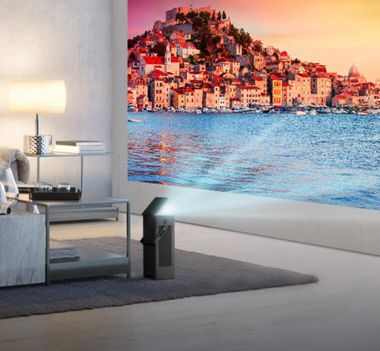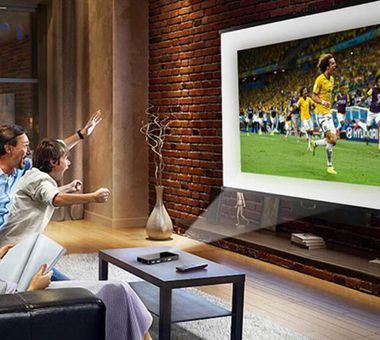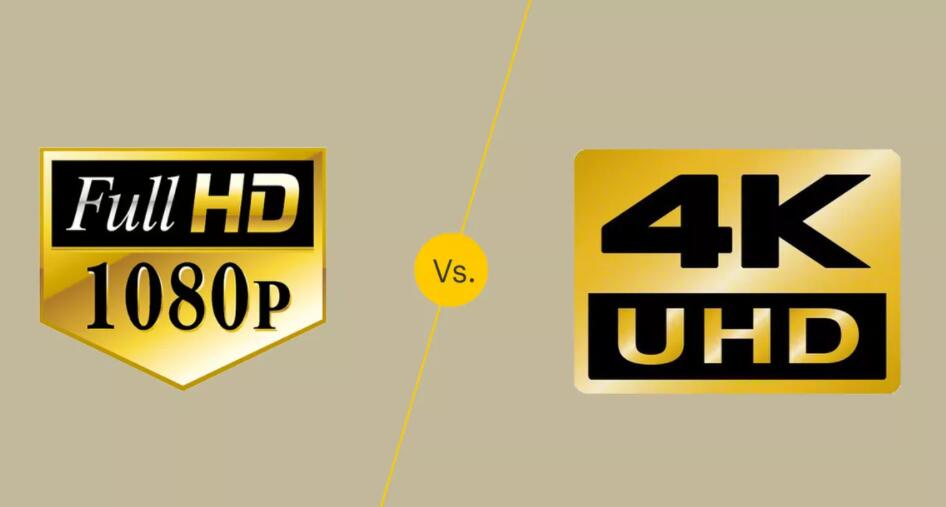
Better resolution has been the name of the game for televisions over the last decade. First it was color, then it was HD, then 720p, then 1080p and now, finally, 4K. Is more always better? At what point does resolution stop mattering? After all, the human eye is only capable of seeing so much detail, right? Have we already hit that threshold? In short, it depends.
The difference between 1080p and 4K is undeniable in that a 4K screen is capable of displaying four times the number of pixels as a 1080p screen. But is the human eye capable of seeing that many pixels? It actually depends on the size of the screen and where you are sitting. From a distance, it is virtually impossible for someone to tell the difference in quality between a 1080p and 4K screen. However, if you have a big enough screen, in a small enough room the difference is immediately apparent. Even if you have a large room, if you sit close enough to the screen you can see the difference.
It is also worth pointing out that the distance you need to be from the screen to notice the detail that 4K offers will differ depending on each individual’s eyesight quality. For example, someone with 20/20 vision can sit farther away from a 4K screen and still see the difference, while someone with less than perfect vision may not. Naturally, if you do not have perfect vision but wear corrective lenses, you can sit farther back from the screen, as long as you are using those lenses.
The size of the screen is also a major factor when it comes to being able to discern the difference between 1080p and 4K. The recommended size is different for computer monitors, because people naturally sit really close to their computer screens anyway. A living room television, however, is most often viewed from the couch. Most experts agree that the minimum screen size to be able to enjoy 4K without having to sit too close is 42 inches. The larger the screen, the farther away you can sit from it while still enjoying maximum image quality. This is all worth remembering as televisions with even higher pixel counts come to market.
So yes, despite the rumors you may have heard floating around, the human eye is capable of seeing the difference between a 1080p screen and a 4K screen. The most important factors to remember are the quality of your eyesight, the size of your screen and the distance you sit from that screen when watching it.
Contents
What Is Screen Resolution?
Resolution is a term that refers to the total number of pixels that a screen can display. It is typically measured in the number of horizontal pixels by vertical pixels. TVs with higher resolutions will usually have sharper images, more vivid colors, and deeper blacks.
Every flat-screen TV is made up of a grid of tiny pixels. Each of these pixels can light up in different colors. If you stand close enough to your screen, you will be able to see individual pixels. Then, when you stand back, the pixels will come together to form an image.
The most common TV resolutions these days are 1280×720 (also known as 720p or HD), 1920×1080 (also known as 1080p or Full HD), and 4K (also known as 2160p or Ultra HD).
However, it is important to keep in mind that a higher resolution won’t necessarily give you a better image. If you want the best picture quality and color contrast, you should also consider the pixel density of your TV, or the number of pixels per inch (PPI). A higher PPI means there will be more detail and dynamic color range on the screen.
What Is 1080p?
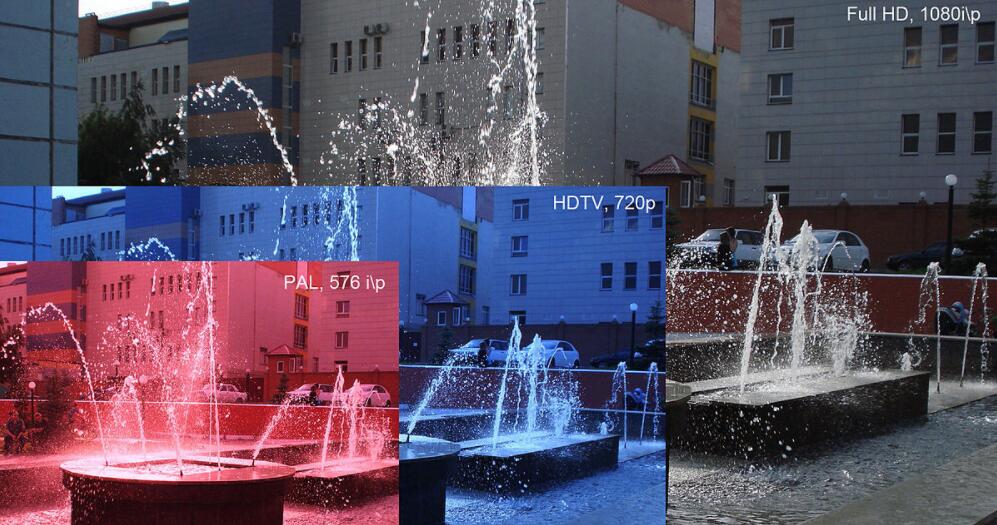
A 1080p display resolution has 1,080 vertical pixels and 1,920 horizontal pixels, for a total of roughly 2 million pixels. The “p” in 1080p stands for “progressive scanning,” which means the image is transmitted all at once, as opposed to interlaced scanning.
With interlaced scanning, images are split into even and odd rows. So, a 1080i TV will only display half the image at once, but it switches between the two halves of the image so quickly that it’s hard to see. However, that means 1080i TVs might show some flickering during motion. One the other hand, progressive scanning displays the entire image on every frame at once. This means 1080p TVs offer a much cleaner image, especially when it comes to motion.
These days, interlaced scanning is not very popular, and it is usually only found in old-school CRT and plasma TVs.
What Is 4K?

We know it’s seriously upgraded our viewing experience, but what is 4K?
4K resolution, at least the way most TV companies define it, is 3840 x 2160 pixels, or 2160p. To put that in perspective, a Full HD 1080p image is only 1920 x 1080. 4K screens have about 8 million pixels, which is around four times what your current 1080p set can display.
Think of your TV like a grid, with rows and columns. A full HD 1080p image is 1080 rows high and 1920 columns wide. A 4K image approximately doubles the numbers in both directions, yielding approximately four times as many pixels total. To put it another way, you could fit every pixel from your 1080p set onto one-quarter of a 4K screen.
4K vs. 1080p Projector: Which Is the Better Option for You?
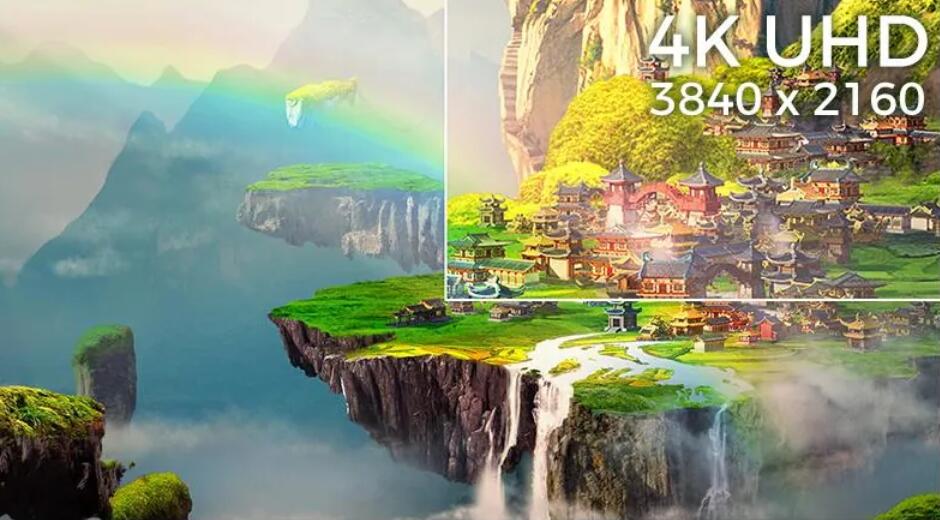
At the end of the day, a 4K vs. 1080p projector for you and your viewing needs will most often come down to personal preference. While you will receive high value from each of these options, they each have their perks, so it is up to you to determine which will better fit your space (and your viewing needs). Let’s continue to take a closer look.
Cost
Fortunately or unfortunately, cost plays a large role in your ability to decide which projector to bring into your new home theater. Of course, we can all dream of what purchases we would like to make, but if they are out of our price range, then these dreams become unrealistic, and we will be unsatisfied with our purchases.
With that in mind, you need to consider the overall price tag that you are willing to pay for your new projector and any installation fees that you might be charged (though these should be rare since you can install the device yourself).
More likely than not, the 4K projector will cost much more than a 1080p projector.
You are paying for a much sharper image resolution and thus a significant rise in the number of pixels on the screen. That said, you can attempt to find second-hand models that are available through friends or reputable sources to decrease the overall cost of either device.
When it comes to the cost of a projector, though, it is important to remember that this is an investment in the quality of entertainment that you are providing for yourself and your friends and family. Going cheap on a device that is used to entertain is rarely a good call.
Resolution
As you might already know or guess by the name, 4k is a much advanced technology than 1080p; Trustedreviews. Although 1080p cannot be in any means considered a low quality but when compared to 4k there is a huge difference in terms of pixel; Techopedia. 1080p have 1920×1080 pixels on screen while 4k refers to either 3840×2160 pixels or 4096×2160 pixels.
So it is very clear that the quality and clarity of 4k projectors are much higher than 1080p projectors. But do remember that to fully enjoy that quality and clarity of image which 4k technology provides, you might require a larger projector screen. If you have a limited space for your projector screen you might want to stick with 1080p projector.
As overall comparison in terms of resolution 4k provides almost 4 times more pixels on screen than 1080p and is clearly a better choice in terms of resolution.
Details
Human eyes have a range to detect small details of pictures. You can see the difference between 4k and 1080p when you watch from a 10 feet distance. If you are standing farther away, the difference might be unnoticeable.
In 4k, you will see better detail of an image that requires close distance to the projector screen. Otherwise, you might lose some details which you would see from close up. The depth and detail of extra pixels in 4k technology provide is the reason for this.
On the contrary, 1080p is producing pretty decent picture details. If you watch content on a big projector screen, details might be unnoticeable for 1080p.
Graphic Detail
Furthermore, the level of detail is also extremely important for each video enthusiast. You agree with us, don’t you? In this respect, the level of detail produced by both types of devices is rather different. While in the case of 1080p, the quality of the image remains basically unchanged regardless of the viewing distance, when it comes to 4k projectors, things are different.
To that end, you can’t notice all the detail that comes with 4k devices if you don’t position yourself accordingly. In other words, if you sit too far from the screen, then you will realize that the quality of the image isn’t distinguishable.
Note that these details are often overlooked by salespersons. So, factor this in before you make a decision. Make sure you consider the size of the room in which you’ll install the projector, as well as other important details that will affect the overall viewing experience.
Brightness
In this case, you must compare the specifications between the two projectors that you are looking for. It is important to check the lumens that the projectors produce. Because both the projectors can project an image well.
If you are purchasing a projector like 4k or 1080p, the lumen range must be 1500-3000 lumens that will vary based on your room’s lighting setup. Even some of the 1080p projectors have higher brightness capabilities than 4k projectors. So, the choice is yours.
